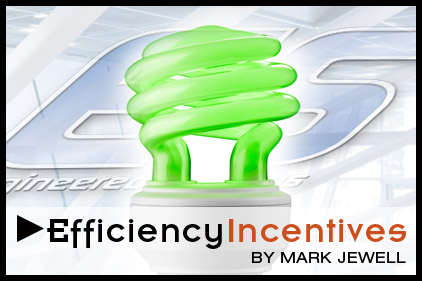
FIGURE 1. Program managers use a variety of interventions to motivate market actors to save energy. SOURCE: National Action Plan for Energy Efficiency (2010). Customer Incentives for Energy Efficiency through Program Offerings. Prepared by William Prindle, ICF International, Inc. www.epa.gov/eeactionplan.
Be smart and get your share.
Several years ago, I authored an article that listed more than a dozen tips for managers interested in maximizing the amount of rebates and incentives they captured for their energy-efficiency projects. At the time, states and utilities in the U.S. and Canada had energy-efficiency budgets totaling about $1.4 billion.
That annual tally has now grown to more than $6 billion, and that doesn’t include the American Recovery and Reinvestment Act (ARRA), which has allocated billions more to the State Energy Program (SEP) and the Energy Efficiency and Conservation Block Grant (EECBG) program.
With so much more funding available to support energy efficiency, managers should be finding all the money they need to support their projects these days, right? Well, not necessarily. Fortunately, small adjustments to the way projects are planned and implemented could dramatically increase their eligibility for incentives. Consider the following tips, for starters.
Invest engineering expertise upfront.A project has to do more than simply “meet code” to maximize its energy efficiency or incentive eligibility potential. Sometimes even small changes to construction specifications can boost a project’s efficiency enough to make it eligible for an incentive. That incentive would lower the first cost, while the increased efficiency would reduce the project’s operating expenses over time. Managers should mandate that vendors investigate any and all available funding sources before submitting their proposals. In many cases, the more expensive, higher-efficiency model turns out to have a lower life-cycle cost given the incentive it would earn and the present value of additional energy savings over its lifetime.
Specify proper configuration.Some programs pay a certain amount per qualifying component. Others pay only if the installed system exceeds an efficiency standard. Managers should take a holistic view of a project’s eligibility prior to specifying its configuration. For example, it’s a great idea to specify highly efficient lighting equipment. However, if it is improperly spaced, the resulting lighting power density (expressed in watts per square foot) could exceed an incentive program’s allowable maximum, making the project ineligible for funding.
Fine-tune procurement language.Most procurement specifications include language that allows bidders to substitute “equivalent” equipment when necessary. Managers interested in protecting a project’s incentive eligibility, as well as long-term operating savings, should carefully craft specifications to prevent substitutions that reduce efficiency. For example, installing a HVAC unit that is similarly sized, but less efficient than the one originally specified, could cost the owner not only the anticipated incentive but also the higher operating costs of the less-efficient machine over its lifetime.
File as early as possible.Some incentive programs remain open all year. Some roll over each year with little change to filing requirements or funding levels. Other programs are very dynamic. And since not all programs follow the calendar year, it pays to know when each program opens and closes, and whether a waiting list will be maintained once the initial funding amount has been fully reserved.
On a related note, managers must pay particular attention to a given incentive program’s requirements for pre-approval and pre- or post-installation inspection. For example, in situations where the utility requires the project to be pre-approved, no material can be purchased prior to receiving the approval letter. Projects that fail to abide by this requirement will be denied funding, as the utility will assume that its incentive was not instrumental in effecting the project’s approval. Some programs also require a pre-installation inspection and/or approved measurement regime to verify energy use before/after the upgrade. Managers who remove inefficient equipment without such verifications run the risk of losing incentives.
Compare programs to maximize incentives.While most incentive programs are mutually exclusive, meaning that a project can only qualify for a single incentive, sometimes a manager can evaluate multiple filing approaches and select the one that yields a greater benefit. For example, a project could be filed under a prescriptive program and collect a predetermined incentive, or under a custom program that would require measurement and verification of baseline conditions and savings in order to qualify for a more generous one. On a related note, in certain territories a project could be eligible for more than one program and collect multiple incentives - for example, where programs sponsored by the state or another agency are available in addition to the utility’s own offerings.
Monitor the measurement and verification (M&V) process.As noted above, some programs offer more generous incentives to projects that can document their baseline consumption and/or actual savings over time. For example, a utility may mandate that a large HVAC replacement have its pre- and post-installation loads verified under specific seasonal conditions. In such cases, a manager must carefully plan and maintain this M&V protocol to fully comply with the funding source’s requirements. Mistakes made in data collection or analysis can doom an incentive application.
Think like a program manager.Utilities and other agencies provide incentives so that their customers will reduce their demand, which obviates the need for new generation, transmission, and distribution infrastructure. Program managers need to know that those demand-side reductions are not only real but persistent. Savings estimates that are realistic and defensible go a long way toward facilitating the identification and capture of incentive dollars for projects. Figure A is excerpted from a document released earlier this year by the EPA. It outlines how utilities and other funding sources intervene in various market segments to produce the demand-side savings they seek. ES

